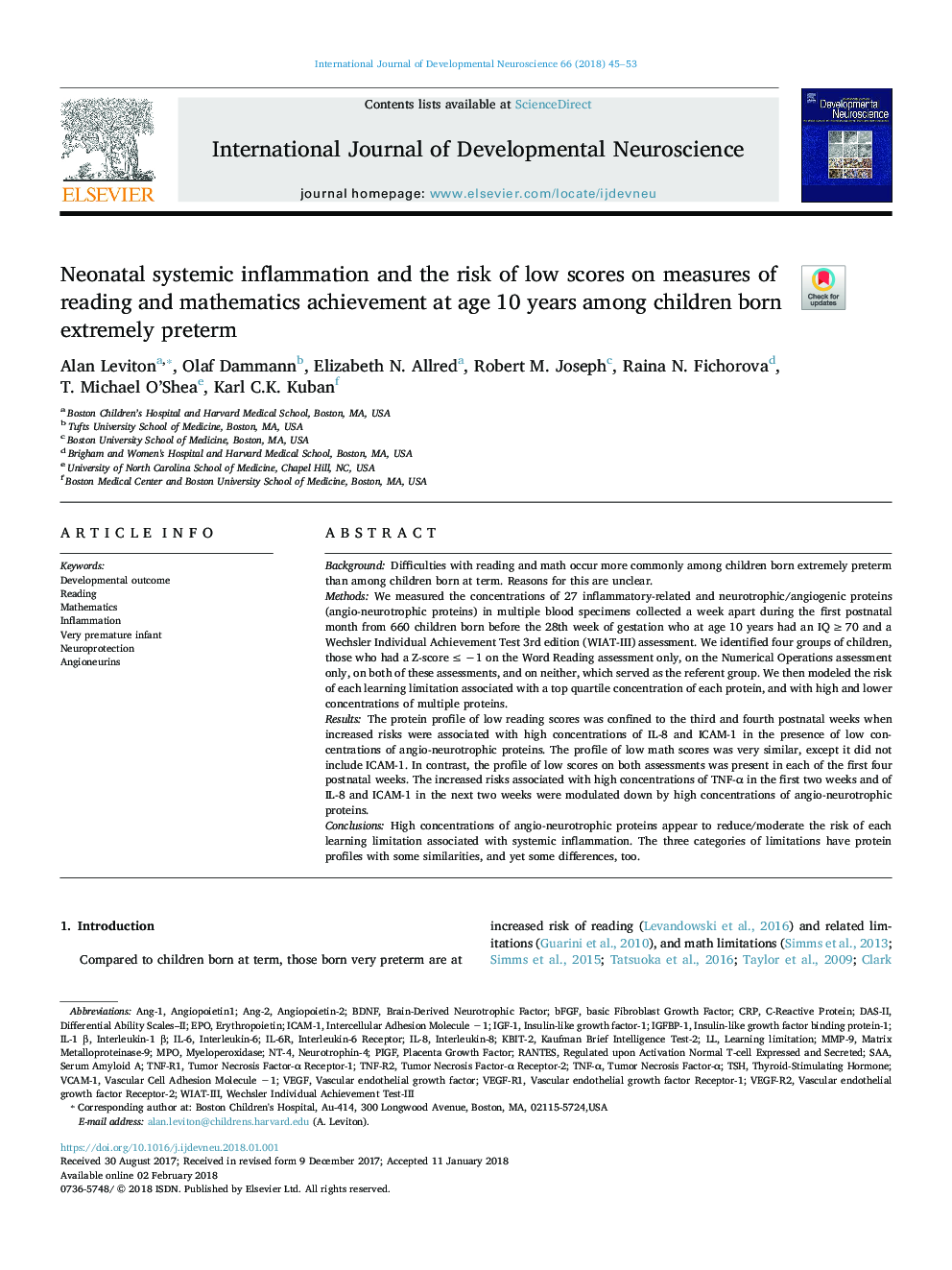| Article ID | Journal | Published Year | Pages | File Type |
|---|---|---|---|---|
| 8626105 | International Journal of Developmental Neuroscience | 2018 | 9 Pages |
Abstract
High concentrations of angio-neurotrophic proteins appear to reduce/moderate the risk of each learning limitation associated with systemic inflammation. The three categories of limitations have protein profiles with some similarities, and yet some differences, too.
Keywords
EPOIL-6RPIGFNT-4angiopoietin-2VEGF-R2VEGF-R1IGFBP-1SAAIGF-1IL-8TSHMMP-9ICAM-1VCAM-1IL-6TNF-R2TNF-R1angiopoietin1regulated upon activation normal T-cell expressed and secretedbFGFBDNFMPOIL-1 βAng-1Ang-2erythropoietininflammationinsulin-like growth factor-1Interleukin-8interleukin-6interleukin-1 βtumor necrosis factor-αReadingMathematicsserum amyloid Aplacenta growth factorVascular endothelial growth factorVascular Endothelial Growth Factor (VEGF)basic fibroblast growth factorBrain-derived neurotrophic factorTNF-αMatrix metalloproteinase-9NeuroprotectionRANTESmyeloperoxidaseDevelopmental outcomeNeurotrophin-4Thyroid-stimulating hormoneInsulin-like growth factor binding protein-1C-reactive proteinCRPvascular endothelial growth factor receptor-1Vascular endothelial growth factor receptor-2Interleukin-6 receptor
Related Topics
Life Sciences
Biochemistry, Genetics and Molecular Biology
Developmental Biology
Authors
Alan Leviton, Olaf Dammann, Elizabeth N. Allred, Robert M. Joseph, Raina N. Fichorova, T. Michael O'Shea, Karl C.K. Kuban,
